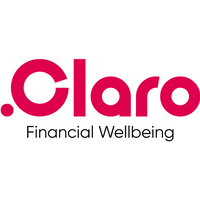Employee wellbeing has 3 pillars. Use them to build success
Three pillars make up employee wellbeing: physical, mental and financial.
Each is critical to developing a strong, healthy organisation.
Get employee wellbeing right and it can help you build what McKinsey, a global management consulting firm, would class as a “non-traditional employee value proposition”. This is where you make your organisation an attractive workplace for current (and future) employees, beyond the traditional aspects – like salary, job title and career progression.
It also helps the bottom line. A recent Saïd Business School study found that organisations with a high level of employee wellbeing are more likely to have high employee productivity and low employee turnover.
These result in:
• Better work output across the organisation
• Lower recruitment costs
With much of the world in economic turmoil, HR, benefits and wellbeing leaders must get their employee wellbeing strategies into shape. The resilience of your organisation depends on the wellbeing of your employees.
Physical wellbeing
The physical wellbeing pillar encompasses everything to do with employee physical health. It often includes support with medical insurance and initiatives to promote exercise and healthy living. The goal is to help employees improve or sustain their physical health.
Physical wellbeing was one of the first recognised areas of employee wellbeing, as long ago as the 1950s when employers began offering employees private healthcare.
Physical wellbeing typically includes offering these essential benefits:
• Private health insurance
• Free breakfast, fruit and healthy meals
• Discounted gym membership
• Free flu jabs
• Cycle-to-work scheme
• Support with eye care
• Support with dental care
For an organisation with none of the three pillars, physical wellbeing is the one to start with. A recent Harvard Business Review survey found health, dental and vision insurance to be the number one most popular employee benefit, with 88% of employees considering it valuable.
But physical wellbeing alone is not enough to fully support employee wellbeing.
Mental wellbeing
The mental wellbeing pillar encompasses everything to do with boosting employee mental health.
The goal is to help as many employees as possible achieve good mental wellbeing. That mean employees being able to cope well with daily life, navigate stressful situations, connect with others and enjoy learning and growing.
Mental wellbeing support should also include adequate measures for those suffering from spectrum and/or anxiety disorders along with other clinical, mental and neurological disorders.
Poor mental health and wellbeing will affect 25% of people during their lives, according to the CIPD. And that partly explains why mental wellbeing has steadily gained prominence as an employee wellbeing benefit over the past decade.
But demand for employers to offer more support in this area increased dramatically after the toll Covid-19 lockdowns and social distancing took on employee mental health.
To support mental health, organisations usually offer:
• Access to therapy or mental health support via health insurance provider
• Access to mental wellbeing and mindfulness platforms
• Education and employee workshops to build awareness of mental health support
There are other factors to take into account, published on Claro Wellbeing’s original blog post.
Financial wellbeing
Financial wellbeing encompasses everything to do with supporting employees to become or remain financially healthy.
A recent survey by Claro found that 67% of employees say financial stress affects their work, while the average employee spends 3.5 working days per year managing personal finances at work. Demand for financial wellbeing support is also high, with 76% of employees saying they’d use financial wellbeing support from their employer.
Financial support can come in all shapes and sizes, but these are best practice:
• Support for financial health and steps to prevent financial health decline:
- Access to budgeting platforms
- Access to personal finance education
- Workshops and webinars by financial experts
• Tailored individual support and mechanisms for emergency financial circumstances:
- Access to one-to-one financial coaching
Financial wellbeing in the workplace must go beyond the cost of living crisis, because levels of financial literacy are comparatively low in the UK.
Indeed, Claro’s survey showed that only one in five Generation Z employees feels in control and happy about their money, compared with 25% of Millennial employees, 28% of Generation X and 38% of Baby Boomers.
As organisations reshape employee wellbeing strategies, it’s essential that they realise how important it is to provide employees with personal finance skills that are often missing.
Supplied by REBA Associate Member, Claro Wellbeing
A financial wellbeing benefit to support your team where it matters most







